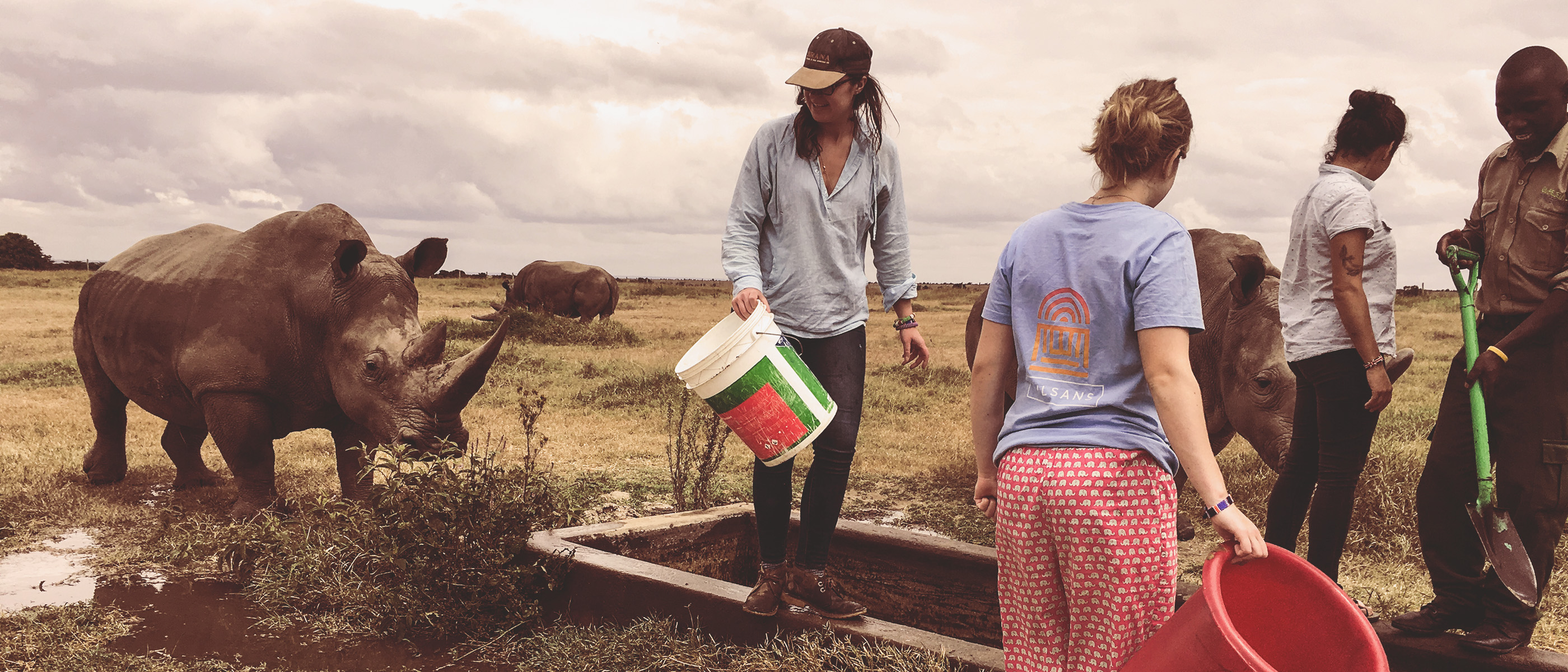Izzy is an OC of our Jan 2020 trip.
Aged 19, she had never been to Kenya before, nor got involved in conservation-based programmes. Here, to help celebrate #earthday2020, she writes about a day’s experience on Ol Pejeta with the last 2 Northern White Rhinos left in the world.

“Ol Pejeta Conservancy is attempting ground-breaking and amazing work to stop the extinction of the Northern White Rhino. We spent one morning of our stay working with the two remaining females and their dedicated keepers - their humbleness and tireless work in attempting to stop this species becoming extinct are awe-inspiring. These are the only two Northern White Rhinos left in the world.
Guided by the keepers, we cleaned their huge water trough - an exhausting activity of emptying out all the water, scrubbing the sides down and brushing any Algae away – with the occasional inquisitive 2-tonne rhino checking in that we were doing it right! It felt like an arduous task but considering this is done weekly without complaint by the dedicated keepers, our contribution seemed very small.

We were then shown where the rhinos sleep - in a large stable block, bedded with straw and hay, which is replaced and washed down every day. Given the history of these rhinos, they are unable to be released into the wild. Instead, each Rhino ‘stall’ has a bunk bed where a keeper sleeps each night to ensure 24-hour surveillance of this critically endangered species.
Later that afternoon, we had the opportunity to go to Ol Pejeta’s rhino graveyard. A very sobering trip where we saw the graves of 16 rhinos. Every gravestone has a different description and name on it, but the vast majority shared a similar explanation of death - “shot dead and both horns removed”.

Ol Pejeta’s work is going above and beyond anything you can imagine. Scientists have taken eggs from the two remaining female Northern White Rhino, who can’t carry pregnancies due to back leg problems developed while growing up in a Czech zoo, and have combined it with the sperm of Sudan who sadly passed in 2018. Sudan was the last male Northern White Rhino.
This work has been moved to a lab in Germany, where the technology for IVF is at its best. There are now three Northern White Rhino embryos that will be carried by three strong surrogates of the Southern White rhino species. This is ground-breaking.

The conservancy’s tireless work to stop extinction is inspiring to say the least and the keepers involved in the everyday care of the remaining two rhinos go out of their way to help them stay happy and healthy. The fact that poaching still exists, due to the belief rhino horn cures some forms of cancer, is frankly terrifying. If we aren’t careful, rhino IVF may become our only option to protect other species of rhinos too – and all because of human greed.
I have come close to looking into the eyes of extinction. I sat 1 meter away, admiring this beautiful creature’s face, its wrinkled skin, tiny eyes, big flickering ears and dense horn (and by the way you can actually see the compacted hair towards the horn base). The reality of extinction is a scary, scary thing. Even though Ol Pejeta’s, ground-breaking work is phenomenal, I hope we will not be leaning on IVF too much in the future as the hunt for ivory and rhino horn continues, and potentially rises during this awful Covid-19 outbreak. Poaching needs to stop. This is something that is completely within our control.”




